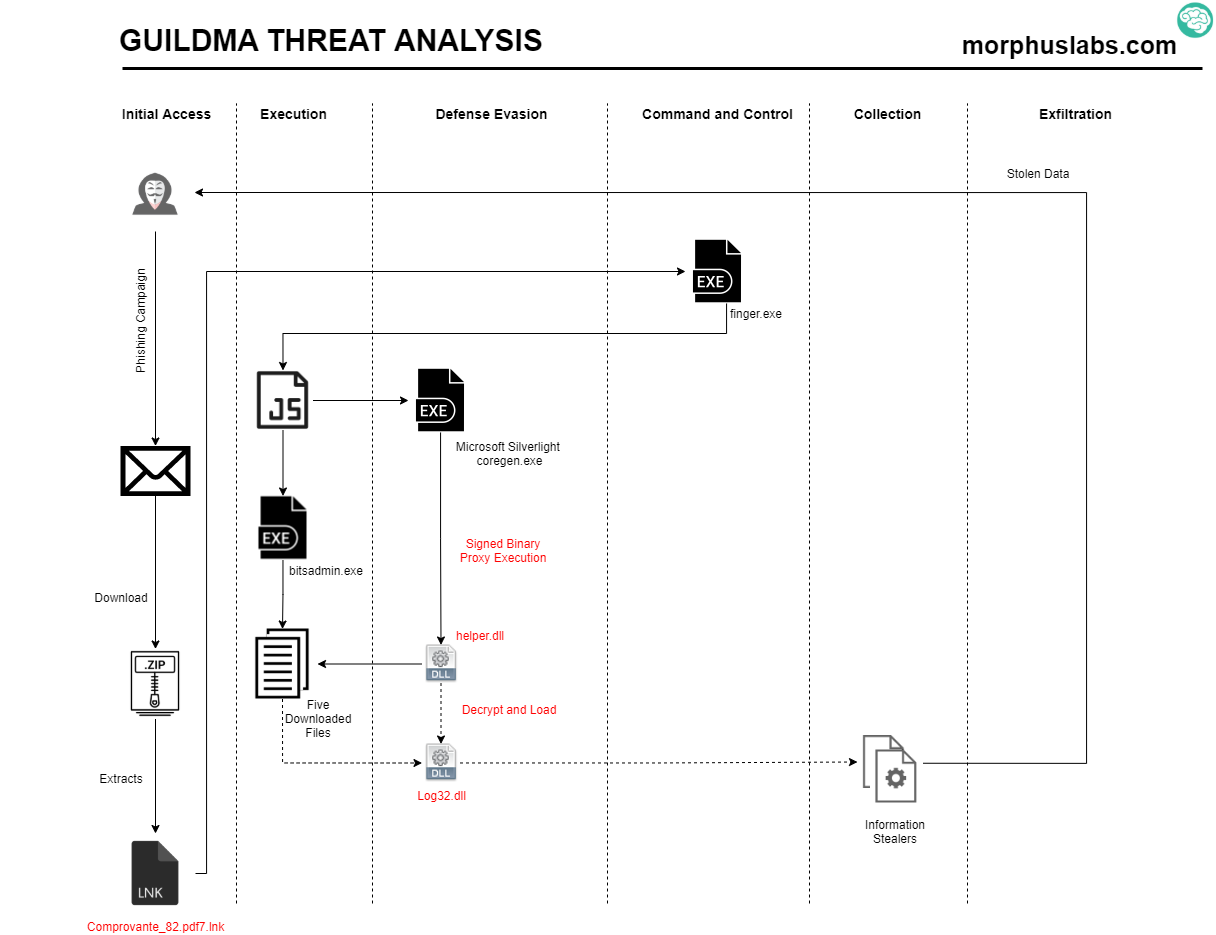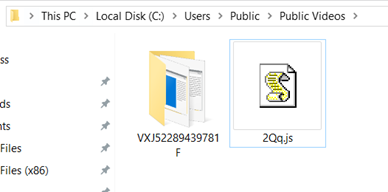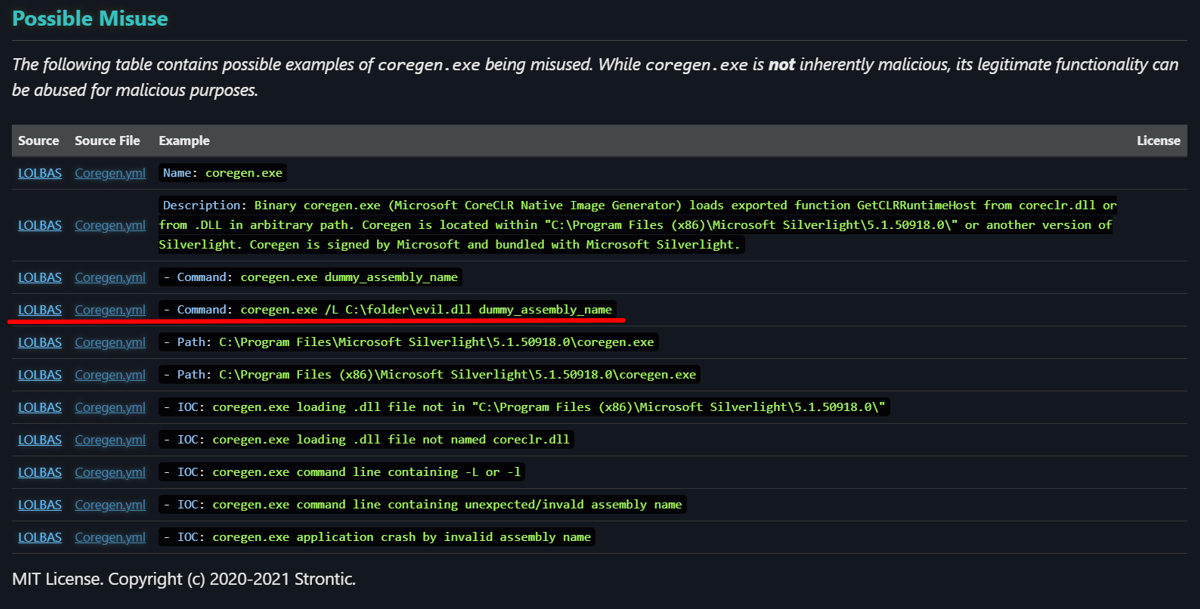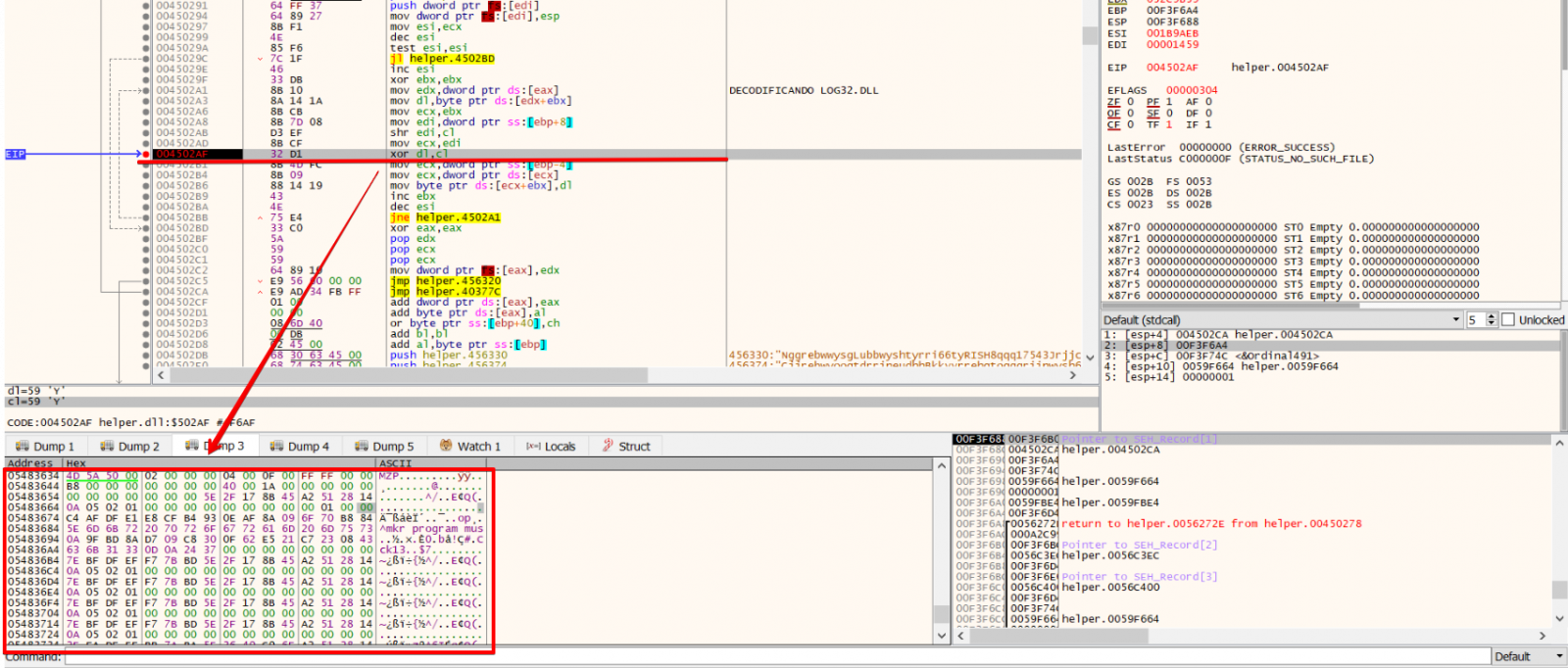Guildma is now using Finger and Signed Binary Proxy Execution to evade defenses
We recently identified a new Guildma/Astaroth campaign targeting South America, mainly Brazil, using a new variant of the malware. Guildma is known by its multiple-staged infection chain and evasion techniques to reach victim’s data and exfiltrate them. In a previous diary [1] at Morphus Labs, we analyzed a Guildma variant which employed an innovative strategy to stay active, using Facebook and YouTube to get a new list of its C2 servers.
The innovation this time is the use of Finger, an old service designed to retrieve information about a particular user or host on a network but employed by Guildma to retrieve the command that will download and start the new victim’s computer infection. In addition, Guildma is bringing its own legit binary to the victim’s machine to employ a technique named Signed Binary Proxy Execution, reducing the chances of being detected.
In today’s diary, check the results of the analysis of this new variant along with MITRE ATT&CK TTPs and IOCs. To start, look at Figure 1. This is the traffic generated by the new variant while contacting attackers’ Finger server and receiving back the malicious command to be executed. .png)
Figure 1 – Guilma traffic while contacting attackers’ Finger server
Threat Analysis

Figure 2 – New Guildma variant analysis
The ongoing campaign starts with an e-mail phishing with a link to a ZIP file which contains an LNK. If the user executes the LNK file, instead of opening a supposed PDF with a proof of payment (Comprovante.pdf7.lnk), it will execute Windows native binary Finger.exe do retrieve the malicious command from attacker’s server on port TCP/79 and pass it to ‘cmd’ to get it executed.
The malicious LNK file is prepared to ‘cmd.exe’ with an obfuscated argument, as seen in Figure 3.
.png)
Figure 3 – LNK content
Analyzing the environment variables created by the above argument, it is possible to see the arguments which will be passed to ‘cmd.exe’. Surprisingly, it calls finger.exe, a native Windows binary to an old service, and pipes its results to a new cmd, as seen in Figure 4.
.png)
Figure 4 – Deobuscated arguments
The result of the finger execution is another obfuscated command with a list of environment variables, as seen in Figure 5.
.png)
Figure 5 – Result of finger execution
Once executed, the above command will create a JS file containing a VB Script on “%Public%\Videos\” and execute it. This execution will result in five more files downloaded and stored into a random path into Videos, as seen in Figure 6. The download is performed using the legitimate binary bitsadmin.exe.

Figure 6 – JS and random directory created by Guildma to store malicious artifacts
The downloaded files are listed in Figure 7.

Figure 7 – Downloaded artifacts
The ‘ctfmon.exe’, despite the name, is in fact, a copy of a legitimate binary named ‘coregen.exe’ which is part of Microsoft Silverlight product, as seen in Figure 8.
.png)
Figure 8 – ‘coregen.exe’ legitimate binary brought over by the attackers
The ‘coregen.exe’ binary is used to load ‘helper.dll’ in a technique named Signed Binary Proxy Execution (T1218) [2]. It is like DLL Side Loading attack, but here the DLL name is passed as argument, as seen in Figure 9. In other words, the attacker is bringing the ‘coregen.exe’ legitimate binary to the victim’s machine and using it as a rundll32 to have its malicious DLL loaded into it as a strategy to evade security controls.

Figure 9 – Coregen.exe used to load malicious DLL
This type of misuse of ‘coregen.exe’ is mapped by Stronic [3], as seen in Figure 10.

Figure 10 – Possible misuse of ‘coregen.exe’ by Stronic
Once loaded, the ‘helper.dll’ will decrypt and load the other DLLs ‘log32.dll’ and ‘log33.dll’ previously downloaded. In the Figure 11 I highlight the routing which decrypts the DLL contents.

Figure 11 – Log32.dll decrypt routine
And finally, once loaded, Log32.dll will perform multiple anti-debugging, anti-vm and a series of system verification, like keyboard type and system language, the presence of a DLL belonging to Diebold Warsaw (wslbscr32.dll), before unpacking and launching information stealer procedures.
Final Considerations
Reflecting on the use of Finger on this new variant, a possible reason that came to my mind was the attempt to bypass security filters that are usually applied to the HTTP/HTTPS traffic. Even employees in home office, may have some type of web browsing filter applied by the company, like web proxies. However, it may not be so common for home firewalls to make a more restrictive Internet outgoing filter, preventing, for example, the exit to the TCP/79 port. In the end, as much as the content travels in clear text on Finger, the attacker may end up having more luck with this strategy than if he used the most common path.
Finally, it is interesting to highlight the use of Signed Binary Proxy Execution technique by the new Guildma variant. Binaries signed with trusted digital certificates can execute on Windows systems protected by digital signature validation – specially those signed by Microsoft, as ‘coregen.exe’.
There are mitigations and detection strategies for Signed Binary Proxy Execution mapped on MITRE ATT&CK [2] which include restricting the execution of particularly vulnerable binaries to privileged accounts that need to use them and establish a baseline for processes and command line parameters for signed binaries to monitor and spot uncommon usage. There is a great project named LOLBAS [5] (Living Off The Land Binaries and Scripts) which maps ‘coregen.exe’ and other binaries that could be abused in a similar way.
References
[2] https://attack.mitre.org/techniques/T1218/
[3]https://strontic.github.io/xcyclopedia/library/coregen.exe-3BF709AEDF5042C39515756FB72E9EC0.html
[4]https://docs.microsoft.com/en-us/windows-server/administration/windows-commands/finger
[5] https://github.com/LOLBAS-Project/LOLBAS
IOCs
|
Category |
Type |
Value |
Comment |
|
Artifacts dropped |
sha256 |
412a6b755b2029126d46e7469854add3faa850f5a4700dd1e078fcc536ca418a |
ctfmon.exe (coregen.exe) - legitimate file being used to start malicious helper.dll |
|
Artifacts dropped |
sha1 |
5f536e6701d928dd262d475cd6987777b9fa5e33 |
ctfmon.exe (coregen.exe) - legitimate file being used to start malicious helper.dll |
|
Artifacts dropped |
md5 |
3bf709aedf5042c39515756fb72e9ec0 |
ctfmon.exe (coregen.exe) - legitimate file being used to start malicious helper.dll |
|
Artifacts dropped |
sha256 |
4fe8e09c61858df60222c5188af91b934d1358ee802d6dc06b4a25e162a71413 |
helper.dll |
|
Artifacts dropped |
sha1 |
cc19f43dbc98a5f471bb9fc926da6e9b190a925c |
helper.dll |
|
Artifacts dropped |
md5 |
1d270124b1e61f21eed666afc4e60d9a |
helper.dll |
|
Artifacts dropped |
sha256 |
7889a7cc80dabc034cd02a3667e1f0028332669ca5ccf9a66b4f853064968158 |
log32.dll |
|
Artifacts dropped |
sha1 |
883bba850a4a6b84bb734841de823c25e09cc4dd |
log32.dll |
|
Artifacts dropped |
md5 |
ea6ebcf305585d692fc4d519c94ed215 |
log32.dll |
|
Artifacts dropped |
sha256 |
5abfff61dcde664006db334859055d22da3b419e2fa2ae734bec48688c564dea |
log33.dll |
|
Artifacts dropped |
sha1 |
6aa3cd190f670671c2a93076dc1a77a551dfc3d3 |
log33.dll |
|
Artifacts dropped |
md5 |
126058c017ca37541da16c5ab6d91257 |
log33.dll |
|
Payload installation |
sha256 |
9f61fc62aa9734406c164decc00f9c027574c4c5f6865d5fb297fb431f75c3bb |
Rt6.js |
|
Payload installation |
sha1 |
77f1cc8b7ce1cbffe91f050cb1e7f790de62e257 |
Rt6.js |
|
Payload installation |
md5 |
50222aecc6a722564bb5844fa07af4d0 |
Rt6.js |
|
Network activity |
ip-dst |
45.79.215.94 |
|
|
Network activity |
domain |
martin21.xyz |
|
|
Network activity |
domain |
martin23.xyz |
|
|
Network activity |
domain |
martin24.xyz |
|
|
Network activity |
domain |
martin05.xyz |
|
|
Network activity |
domain |
martin17.xyz |
|
|
Network activity |
domain |
martin27.xyz |
|
|
Network activity |
domain |
martin06.xyz |
|
|
Network activity |
domain |
martin03.xyz |
|
|
Network activity |
domain |
martin04.xyz |
|
|
Network activity |
domain |
martin02.xyz |
|
|
Network activity |
domain |
martin01.xyz |
|
|
Network activity |
domain |
martin08.xyz |
|
|
Network activity |
domain |
martin07.xyz |
|
|
Network activity |
domain |
martin10.xyz |
|
|
Network activity |
domain |
martin11.xyz |
|
|
Network activity |
domain |
go8357.xyz |
|
|
Network activity |
domain |
alinester07.xyz |
|
|
Network activity |
domain |
martin19.xyz |
|
|
Network activity |
domain |
martin18.xyz |
|
|
Network activity |
domain |
martin16.xyz |
|
|
Network activity |
domain |
martin15.xyz |
|
|
Network activity |
domain |
martin14.xyz |
|
|
Network activity |
domain |
martin13.xyz |
|
|
Network activity |
domain |
martin12.xyz |
|
|
Network activity |
domain |
martin31.xyz |
|
|
Network activity |
domain |
martin30.xyz |
|
|
Network activity |
domain |
martin29.xyz |
|
|
Network activity |
domain |
martin28.xyz |
|
|
Network activity |
domain |
martin26.xyz |
|
|
Network activity |
domain |
martin25.xyz |
|
|
Network activity |
domain |
martin22.xyz |
--
Renato Marinho
Morphus Labs| LinkedIn|Twitter
Quick and dirty Python: nmap
Continuing on from the "Quick and dirty Python: masscan" diary, which implemented a simple port scanner in Python using masscan to detect web instances on TCP ports 80 or 443. Masscan is perfectly good as a blunt instrument to quickly find open TCP ports across large address spaces, but for fine details it is better to use a scanner like nmap that, while much slower, is able to probe the port to get a better idea of what is running.
First lets backtrack. Since the previous diary, I converted the masscan code to a function and created another function to parse the masscan results to return the list of IPs on which masscan detected open ports. The current script scan_web.py script is:
#!/usr/local/bin/python3
import sys,getopt,argparse
import masscan
import pprint
def scan_masscan(ips):
try:
maso = masscan.PortScanner()
maso.scan(ips, ports='80,443')
except:
print("Error:", sys.exc_info()[0])
sys.exit(1)
return(maso)
def parse_masscan_host_list(massout):
#initialize
host_list = list()
# Build a list from the massscan output
for host in massout.all_hosts:
host_list.append(host)
return(host_list)
def main():
# read in the IP parameter
parser = argparse.ArgumentParser()
parser.add_argument('IP', help="IP address or range")
args=parser.parse_args()
ip=args.IP
maso=scan_masscan(ip)
if int(maso.scanstats['uphosts']) > 0:
host_list=parse_masscan_host_list(maso)
pprint.pprint(host_list)
else:
print("No Masscan results")
sys.exit(1)
if __name__ == "__main__":
main()
Running the script results in a list of IPs where either 80 or 443 were detected open by masscan.
# ./scan_web.py 45.60.103.0,45.60.31.34,1.2.3.4
[2021-05-31 18:28:51,335] [DEBUG] [masscan.py 10 line] Scan parameters: "masscan -oX - 45.60.103.0,45.60.31.34,1.2.3.4 -p 80,443"
['45.60.103.0', '45.60.31.34']
Extending this script to pass the masscan output list to nmap is relatively easy as well. As somebody pointed out on a comment to the last diary, there are a lot of Python nmap modules and they all provide differing functionality. After messing with a few of them, as the comment stated, the libnmap module appears to be the most functional and easiest to use. libnmap does not implement nmap functionality, it needs nmap already installed on the device and interfaces with that version. I will not be going over nmap functionality in this diary. If you are not clear on the nmap command parameters you can find a quick tutorial in this older diary.
To implement the nmap scan will require two functions. One to run the scan, and one to parse the results.
The scanning function:
def scan_nmap(ip_list):
print("Starting nmap for: {0}".format(ip_list))
nm = NmapProcess(ip_list, options="-Pn -n -A -sT -p80,443 -r --max-retries 2 --host-timeout 2h --open --reason")
nrc = nm.run()
if nrc != 0:
print("nmap scan failed: {0}".format(nm.stderr))
exit(0)
try:
nparse = NmapParser.parse(nm.stdout)
except NmapParserExcetion as e:
print("Exception raised while parsing scan: {0}".format(e.msg))
return(nparse)
and the function to parse and output the scan result. This example is almost verbatim from the libnmap documentation.
def print_nmap(nmap_report):
print("Starting Nmap {0} ( http://nmap.org ) at {1}".format(
nmap_report.version,
nmap_report.started))
for host in nmap_report.hosts:
if len(host.hostnames):
tmp_host = host.hostnames.pop()
else:
tmp_host = host.address
print("Nmap scan report for {0} ({1})".format(
tmp_host,
host.address))
print("Host is {0}.".format(host.status))
print(" PORT STATE SERVICE")
for serv in host.services:
pserv = "{0:>5s}/{1:3s} {2:12s} {3}".format(
str(serv.port),
serv.protocol,
serv.state,
serv.service)
if len(serv.banner):
pserv += " ({0})".format(serv.banner)
print(pserv)
print(nmap_report.summary)
The output from the finished script is:
# ./scan_web.py 45.60.103.0,45.60.31.34,1.2.3.4
[2021-05-31 19:00:56,329] [DEBUG] [masscan.py 10 line] Scan parameters: "masscan -oX - 45.60.103.0,45.60.31.34,1.2.3.4 -p 80,443"
Starting nmap for: ['45.60.103.0', '45.60.31.34']
Starting Nmap 7.91 ( http://nmap.org ) at 1622487670
Nmap scan report for 45.60.103.0 (45.60.103.0)
Host is up.
PORT STATE SERVICE
80/tcp open http
443/tcp open https
Nmap scan report for 45.60.31.34 (45.60.31.34)
Host is up.
PORT STATE SERVICE
80/tcp open http
443/tcp open https
Nmap done at Mon May 31 19:01:49 2021; 2 IP addresses (2 hosts up) scanned in 40.03 seconds
In about 80 lines of python code. I have implemented a simple script that can quickly scan a large address space using the very quick masscan and then send the output to nmap to do detailed scanning of a single port. This script is the basic framework I use for dozens of scripts to scan an entire ASN looking for devices that may be at risk for the current vulnerability of the week.
The final version of the scan_web.py script is:
#!/usr/local/bin/python3
import sys,getopt,argparse
import masscan
from libnmap.process import NmapProcess
from libnmap.parser import NmapParser, NmapParserException
import pprint
def scan_masscan(ips):
try:
maso = masscan.PortScanner()
maso.scan(ips, ports='80,443')
except:
print("Error:", sys.exc_info()[0])
sys.exit(1)
return(maso)
def parse_masscan_host_list(massout):
#initialize
host_list = list()
# Build a list from the massscan output
for host in massout.all_hosts:
host_list.append(host)
return(host_list)
def scan_nmap(ip_list):
print("Starting nmap for: {0}".format(ip_list))
nm = NmapProcess(ip_list, options="-Pn -n -A -sT -p80,443 -r --max-retries 2 --host-timeout 2h --open --reason")
nrc = nm.run()
if nrc != 0:
print("nmap scan failed: {0}".format(nm.stderr))
exit(0)
try:
nparse = NmapParser.parse(nm.stdout)
except NmapParserExcetion as e:
print("Exception raised while parsing scan: {0}".format(e.msg))
pprint.pprint(nparse)
return(nparse)
def print_nmap(nmap_report):
print("Starting Nmap {0} ( http://nmap.org ) at {1}".format(
nmap_report.version,
nmap_report.started))
for host in nmap_report.hosts:
if len(host.hostnames):
tmp_host = host.hostnames.pop()
else:
tmp_host = host.address
print("Nmap scan report for {0} ({1})".format(
tmp_host,
host.address))
print("Host is {0}.".format(host.status))
print(" PORT STATE SERVICE")
for serv in host.services:
pserv = "{0:>5s}/{1:3s} {2:12s} {3}".format(
str(serv.port),
serv.protocol,
serv.state,
serv.service)
if len(serv.banner):
pserv += " ({0})".format(serv.banner)
print(pserv)
print(nmap_report.summary)
def main():
# read in the IP parameter
parser = argparse.ArgumentParser()
parser.add_argument('IP', help="IP address or range")
args=parser.parse_args()
ip=args.IP
maso=scan_masscan(ip)
if int(maso.scanstats['uphosts']) > 0:
host_list=parse_masscan_host_list(maso)
nreport = scan_nmap(host_list)
print_nmap(nreport)
else:
print("No Masscan results")
sys.exit(1)
if __name__ == "__main__":
main()
Caveat1: Never scan an IP range you don't have permission to scan. While port scanning is not illegal in most jurisdictions it is questionable ethically to scan things you don't own or have permission to scan.
Caveat2: I am not a professional Python programmer. My scripting gets the job done that I need it to do. I know there are many smart people out there who can write way better code than I can.
-- Rick Wanner MSISE - rwanner at isc dot sans dot edu - Twitter:namedeplume (Protected)


Comments